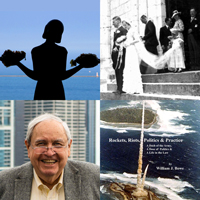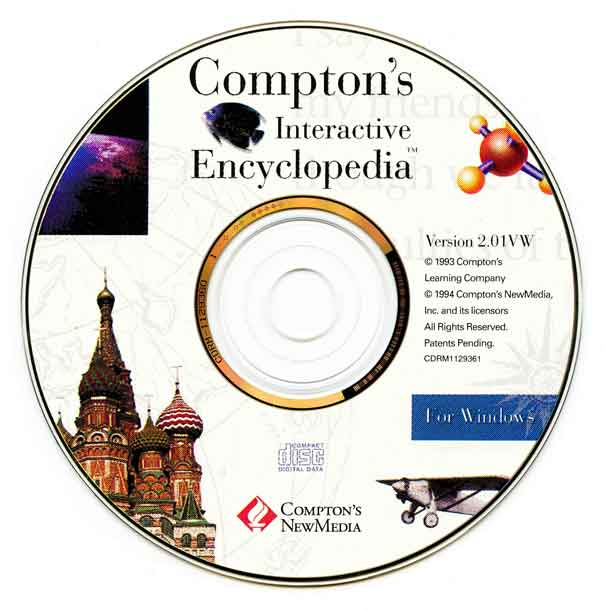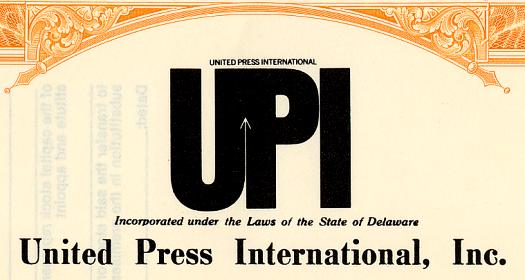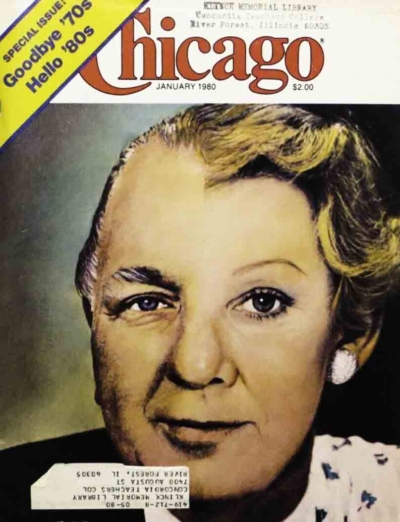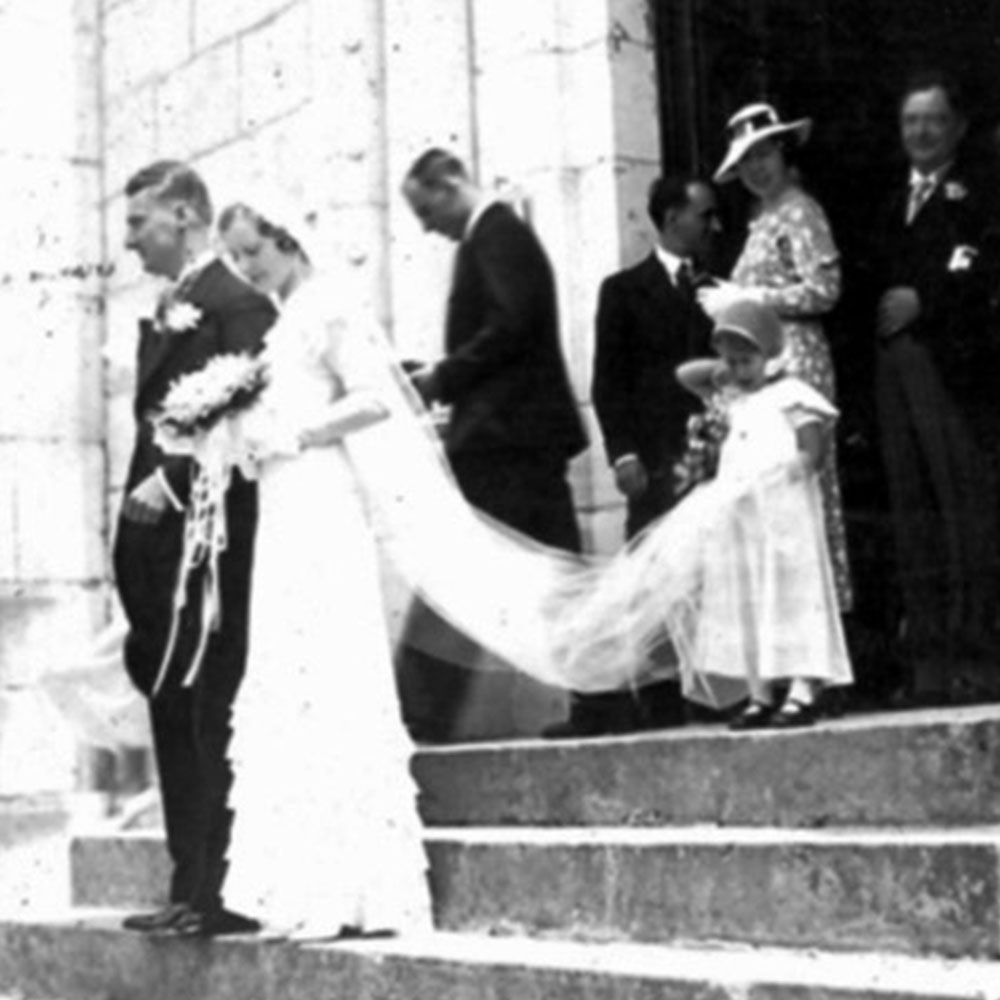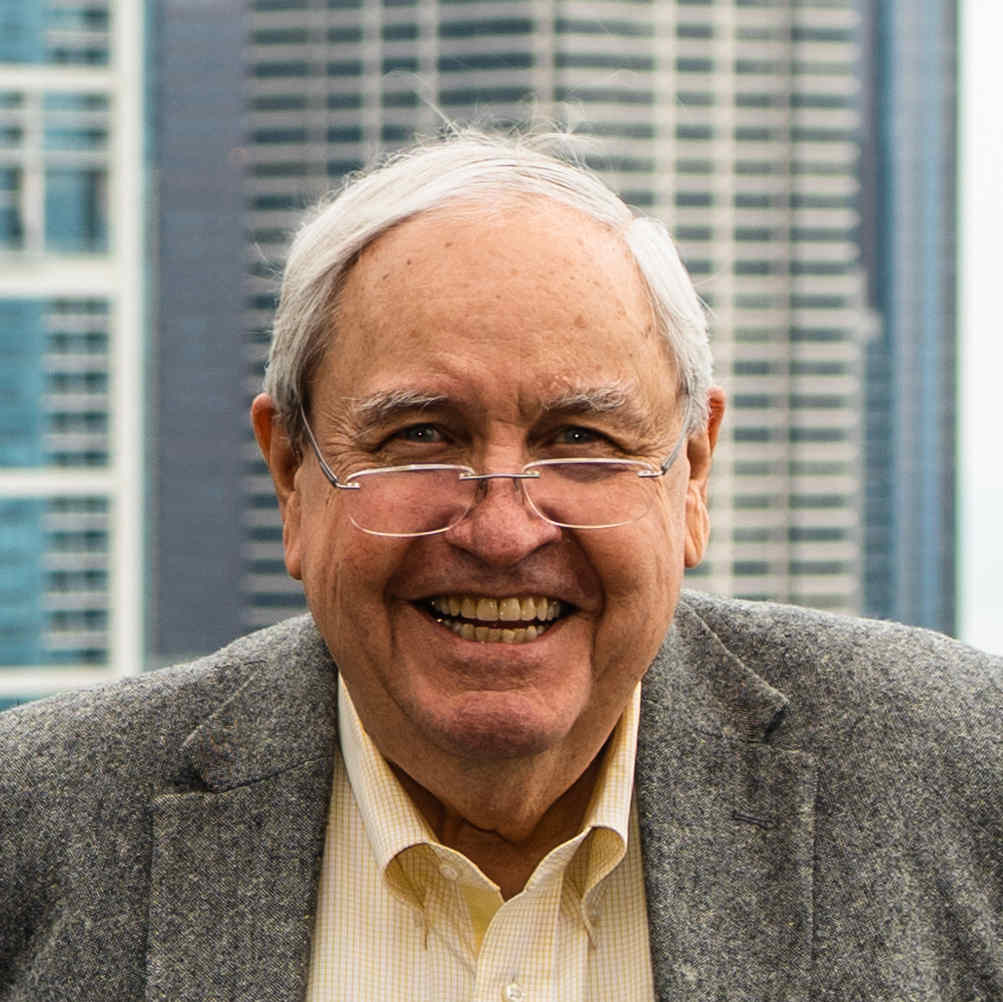United Press had been founded in 1907 by E.W. Scripps, the owner of newspapers in Cincinnati, Cleveland, Columbus, and Toledo. The papers covered local news in these cities adequately but were at a disadvantage in covering non-local news. The competitors of Scripps had inexpensive access to news stories outside their local markets because they had access to the Associated Press wire service and Scripps did not. AP was a standalone cooperative news-gathering organization created and funded at the time by its members, most of the country’s largest newspapers. With these newspapers as members of the cooperative, AP was able to telegraph these local stories to them in an economical way.
The cooperative newspapers that owned AP had solidified their monopoly on this kind of economic news reporting by making it against AP policy for it to sell to more than one newspaper in each market. This had forced Scripps into the uneconomic step of beginning to put its own reporters in cities in which it had no newspaper or way to offset the cost.
The answer to this problem that Scripps arrived at was to create a competitor to AP. After some years, his United Press had a small number of correspondents in cities that were transmitting about 12,000 words of Morse code over leased telegraph lines to 369 newspapers. In later years, UP grew to be a worthy competitor to the AP but throughout the decades always remained second in size and scope to the AP. What it lacked in AP’s deeper resources, it tried to make up for with a colorful focus on people and succinct lively reporting.
In the late 1920s, UP’s head briefly met with William Randolph Hearst to discuss merging with the Hearst newspaper chain’s competing International News Service. INS was having its own difficulties competing with the AP behemoth at the time. According to the history of UPI in the book Down to the Wire, written by Gregory Gordon and Ronald Cohen, Hearst is said to have replied, “You know a mother is always fondest of her sickest child. So, I guess I will just keep the INS.” However, in 1954, three years after Hearst’s death, the mother of INS was no longer in the picture. The merger went forward, and the United Press became United Press International.
In the next two decades, UPI thrived. By 1975, it counted 6,911 customers. Its main revenue producers then were 1,146 newspapers and 3,680 broadcasters. Technology advances in computerization had brought teletype machine advances, but cost-saving satellite technology was still in the future.
After 1975, the continuing movement of advertising dollars from newspapers to television began to sharply reduce the number of surviving afternoon newspapers in the country. This had an increasingly negative effect on UPI’s finances. In the late 1970s, UPI merger talks with CBS, National Public Radio, and other possible buyers went nowhere, and Scripps’ executives went public with news that they were interested in a sale or other divestiture of UPI. By 1980, a quadrennial year with extra news expenses for both the presidential election and the Olympics, the Scripps chain was forced to underwrite a $12 million annual operating loss at its UPI subsidiary.
With no responsible parties in the news business stepping up to the plate with an offer to take UPI off its hands, the E.W. Scripps Family Trust, which owned the newspaper chain, began pressing for a sale of UPI on any basis.
Beneficiaries of the Trust were Scripps family heirs. Trustees of the Trust, owing a fiduciary duty to the heirs, were increasingly concerned that if the Trust continued to own UPI, at some time in the future the trustees might be subject to up to $50 million in unfunded pension liabilities.
They were also worried that lawsuits could be brought by the heirs against the trustees for wasting the Trust’s assets by continuing to fund the losses of a wire service that no longer was essential for the Scripps newspapers to own.
Enter at this propitious moment, Douglas Ruhe and William Geissler. They bought UPI from Scripps for $1 in June 1982.
UPI’s new owners, Douglas Ruhe and William Geissler, were young Nashville entrepreneurs. Though they had started out with little business experience or capital, their small Nashville company, Focus Communications Co., had been issued one low-powered television license in Illinois and had several others pending.
Ruhe had grown up in an unusual family. His father, Dr. David Ruhe, was appointed the first professor of Medical Communications at the University of Kansas Medical School in 1954. Dr. Ruhe was a medical educator who made more than 100 training films. A member of the Baha’i Faith, he was later elected Secretary of the National Spiritual Assembly of the Baha’is of the United States. As the Baha’i Faith has no clergy, it is governed by elected spiritual assemblies. Then from 1968 to 1993, the senior Ruhe served as one of the nine members of the representative body of the global Baha’i community, the Universal House of Justice of the Baha’i Faith resident in Haifa, Israel. Dr. Ruhe had also long been active in civil rights, working in Atlanta in the 1940s to increase the hiring of African American police officers and in Kansas City in the 1960s in protesting segregation.
His son Doug had followed his father in the Baha’i Faith. He had met Bill Geissler when both attended graduate school at the University of Massachusetts in Amherst. They later worked together in the 1970s at the Baha’i National Center in Wilmette, Illinois, near where Dr. Ruhe lived. In 1977, with a loan from Ruhe’s mother-in-law, the two joined with a Korean-born graphics designer and started a small public relations firm in the attic of Ruhe’s home in nearby Evanston.
In 1980, under President Jimmy Carter, the Federal Communications Commission had launched a program to “let the little guy” get into commercial television broadcasting. The idea was to ease licensing requirements and financial hurdles for low-power TV stations that would have a small range of 15 miles, rather than the average 50 miles for full-power stations. The thinking was that these stations would be cheaper to build, enabling minorities and more owners to get broadcast licenses. Applicants for low-power stations also would no longer have to prove they had the financial wherewithal to actually make a go of it.
By 1985, many of the 40,000 applications received were for overlapping geographic areas. In these cases, licenses had been awarded in over 300 lotteries. To steer more applications to minority applicants and increase their chances of beating out non-minority applicants, minority applicants were given more lottery numbers. With Doug Ruhe married to a Black, and their Korean-born partner married to a Native American, enough boxes were checked for several low-power licenses to be pending or issued to their Focus Communications enterprise. The issued license at the time was for Channel 66 in Joliet, Illinois, near Chicago. The then-chief of the FCC’s low-power TV branch, Barbara Kreisman, estimated that minorities, given extra numbers to play with in the lottery, had won about two-thirds of the lotteries they had participated in.
In the early days, their scrambled signal gave low-power television stations wide programming latitude to attract a paying, subscription audience. At fandom.com, the self-described “world’s largest fan wiki platform,” I found a brief history of Ruhe and Geissler’s Joliet station WFBN:
Independent station WFBN. Originally owned by Nashville-based Focus Broadcasting, initially ran local public-access programs during the daytime hours and the subscription television service Spectrum during the nighttime. By 1982, WFBN ran Spectrum programming almost 24 hours a day; however, by the fall of 1983, Spectrum shared the same schedule with that service’s Chicago subscription rival ONTV. The station as well as ONTV parent National Subscription Television faced legal scrutiny because of its lack of news or public affairs programming and was faced with class action lawsuits because of the pornographic films aired by ONTV during late-night timeslots, with some of these legal challenges continuing even after ONTV was discontinued; however, a ruling by the Federal Communications Commission (FCC) permitted broadcast television stations to air content normally considered indecent through an amendment to its definition of what constituted “public airwaves.” It declared that “broadcasts which could not be seen and heard in the clear by an ordinary viewer with an ordinary television were exempt,” as long as the signal was encrypted.
Having vaulted into the ownership of several active and pending television station licenses, Ruhe happened to see a Wall Street Journal article in 1982 that E.W. Scripps, Co., having failed to sell UPI to other buyers, was considering selling the company to National Public Radio, a private and publicly funded not-for-profit company. Ruhe immediately focused on his next goal, buying UPI.
Knowing that they lacked experience in the news business, the pair contacted the lawyer for their earlier public relations firm, Cordell Overgaard, a partner in Linda Neal’s law firm of Hopkins & Sutter. Overgaard put them in touch with Rob Small, another client of his and a publisher of several small Illinois newspapers. Ruhe and Geissler thought Rob Small would be a good partner and agreed he would be Chairman of UPI after the sale.
This choice lent a needed patina of credibility to their bid to buy UPI. Also joining their effort to buy UPI was a fresh Baha’i graduate of Harvard Business School, Bill Alhauser.
He became UPI Treasurer. Ruhe and Geissler initially had a 60 percent interest in UPI, Rob Small and Overgaard got 15 percent each, and Alhauser and another financial adviser, Tom Haughney, 5 percent.
Scripps had diligently been trying to sell UPI for five years at this point and was ready to throw in the towel. To finally get rid of it to Ruhe and Geissler, Scripps provided UPI $5 million in working capital and put another $2 million-plus into its pension funds.
For their part, Ruhe and Geissler put up the proverbial $1. On June 3, 1982, UPI was theirs.
What they had bought was the second-largest generator of news on the planet, with more than 200 bureaus around the world and over 1,500 employees writing, editing, and distributing over 12 million words of news daily.
The purchase by Ruhe and Geissler got a rough reception once its customer base of newspaper publishers heard of the sale. Their unease was accentuated when The Tennessean newspaper in Nashville reported that both men had previously been arrested, Ruhe in a civil rights demonstration and Geissler for draft evasion. Geissler had even served a year in federal prison as a result.
Following their purchase of UPI, operational chaos was quickly the order of the day in upper management. UPI’s carryover President was shown the door and a former news executive with NBC and CBS, Bill Small (no relation to Rob Small), arrived as an expensive replacement.
Small had no experience in the wholesale news business, but he at least gave Ruhe and Geissler a known figure in the news business to be the public face of UPI.
In the fall of 1982, Alhauser had directed UPI’s Controller to stop sending Overgaard and Rob Small monthly financial statements.
Then, in early 1983, both Rob Small and Overgaard resigned their management roles when it became apparent that Ruhe and Geissler were not inclined to listen to them.
Gordon and Cohen’s Down to the Wire reports on Rob Small’s and Overgaard’s reaction to what had happened in the short time that had elapsed since the purchase of UPI:
Ruhe and Geissler, they felt, were lost in dreamy idealism that distorted their business judgement. If their partners were going to run UPI into the ground, Small and Overgaard wanted no part of it.
Other major changes in management followed. In 1983, Australian Maxwell McCrohon, the Chicago Tribune’s Vice President for News, came in as UPI’s Editor-in-Chief and Luis Nogales, a Vice President in Gene Autry’s Golden West Broadcasting, later arrived as Executive Vice President.

